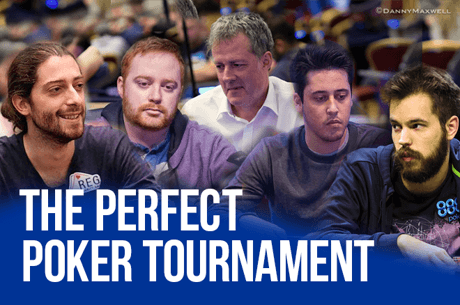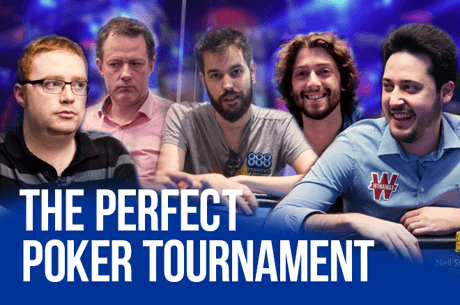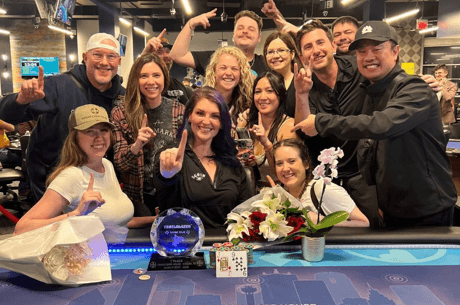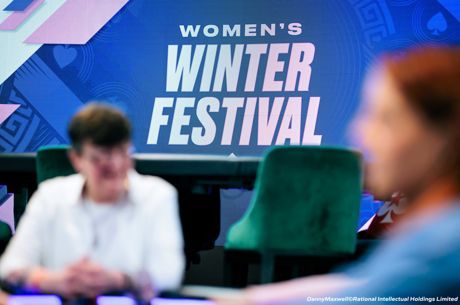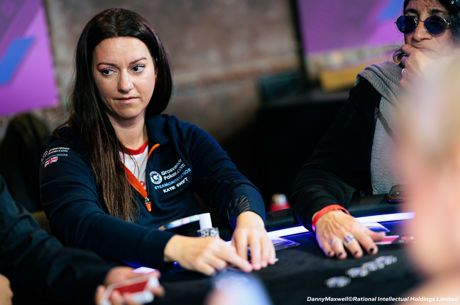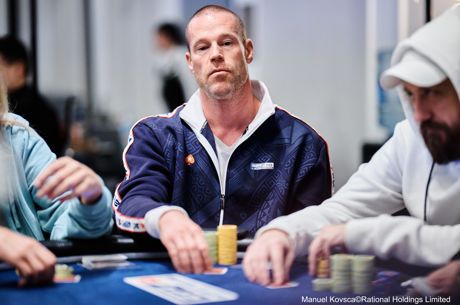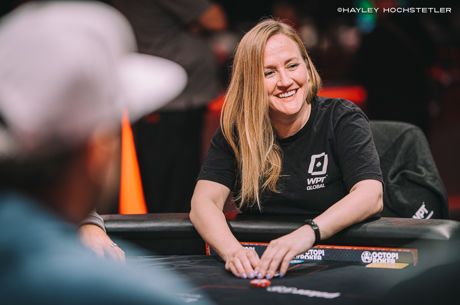The Perfect Poker Tournament Part 3: Regular Ante, Button Ante, or Big Blind Ante?

In the first two parts of our series on what makes the perfect poker tournament, we spoke to five top poker professionals about how many players should sit at a standard poker table and which tournament format the game should take.
This time, we’re speaking to Unibet Poker’s Dara O’Kearney, 888Poker’s Dominik Nitsche, Team PokerStars Pro Igor Kurganov, Winamax's Adrian Mateos, and Niall Farrell about one of the newest innovations in the game - the changing face of the ante. Should the regular ‘everyone pays’ ante be preserved, or should the button ante or big blind ante take over, and if so, which one? Let’s find out.
The Future of the Ante in Poker Tournaments
Farrell: As we go forward, we should be constantly progressing to make it as close as possible to a perfect poker experience. Things take a little while and there are a lot of people who are afraid of change.
Farrell: “The reason people play poker is they want to sit down and see some flops, they want to play some hands.”
Is the poker ante - an additional amount of chips that each player adds each hand to get the action going - an area where change could come quicker than even we might have imagined? This year, we’ve seen big blind or button ante tournaments sprout up everywhere. Unibet Poker’s Dara O’ Kearney believes that it’s an inevitable progression from an outdated system.
O’Kearney: I think there are some small problems with button ante and big blind ante, but what you gain in terms of the speed and the dealer not having to chase people for antes all the time, more than compensates. I feel like the traditional ante is just going to disappear over the next year or two and big blind ante or button ante will take over.
Kurganov: In live tournaments, the regular ante is bad. Too much time is wasted, it’s big blind or button ante.
Farrell: At the World Series, you have inexperienced dealers and you’re playing a 10-handed $1k with a lot of recreational players. People are on their phones forgetting to ante.
You play so many more hands with one person paying the ante. Anything that speeds up the game is just a far superior system, it cuts out so much shit like people arguing over who paid their ante. The reason people play poker is they want to sit down and see some flops, they want to play some hands.
Mateos: I played three years ago in London when everyone had to ante, and it was strange for me. It was the last tournament I played without it being big blind ante because they have tournament antes like this these days. It was really strange, and I can’t think why we played like this for many years.
If the regular ante is so outdated, which should replace it, big blind ante or button ante? There are merits to both systems, and players remain divided on which one is best.
Kurganov: “So what? You have to make adjustments. What’s bad about that? Screw that, deal with a new environment.”
O’Kearney: If I had to put my money on either one of them right now, I’d say big blind ante would be the one that’ll win out.
Let’s say you’ve just been crippled and don’t have enough to pay a full ante and you’re on the button. With the button ante, you’ve obviously all-in and if you bust, that’s fine from a procedural point of view, but I think people have a hard time accepting that’s all they can win back.
Some tournaments follow a rule where the ante is posted first, then the big blinds. With others, it's blind first. If it’s blinds first, then you can end up tripling up or quadrupling up depending on the number of players in. That makes for a better recreational experience. Big blind ante where blinds are posted first then the ante just seems fairer. I feel like long term, that’s the best solution and hopefully, the one that’ll catch on.
Kurganov: Both have been tried. It seems like the downside of big blind ante is only the perceptual difference that they now have to pay double. The slight adjustments that you have to make are under-the-gun or UTG+1. So what? You have to make adjustments. What’s bad about that? Screw that, deal with a new environment. It’s actually good. People cannot just use their pre-earned ranges which is an advantage to have against players who haven’t done that.
Farrell: I think big blind ante is much better than a button blind ante. You never have a dead big blind but you can have a dead button, that’s reason enough make it the big blind. It’s much quicker, much smoother for everyone, it’s a massive net positive on the game.
Anything that keeps the game going smoothly by default makes it a better experience; everyone’s in a better mood. 8-handed with no-one having to ante all the time [makes] the game much more enjoyable. It all stems from there as an overall much nicer experience. Playing an eight-handed Aria event with a one-person ante, for example; there’s lots of room, the game flows. If you make it a nicer, more fun thing to do, more people will do it.
No system is perfect, and it would seem that the button ante game model has more issues than paying a big blind ante.
Nitsche: “Why would you ever act quickly in the small blind if you could make the blinds go up on your button?”
Mateos: Big Blind ante is better than button ante because only two people need to put money in. You want to speed it up, and it’s better to have two people pay rather than three. Button ante has one big problem, that is when player busts. Sometimes, the button is dead and that’s a big problem because you have a hand with no ante and it changes the dynamics. It’s a big mistake; big blind ante is much better.”
Nitsche: I'm fine with big blind ante. I still have concerns that people use it to ‘angle’ as well as waste time. Why would you ever act quickly in the small blind if you could make the blinds go up on your button? If enough people do this, then big blind ante is suddenly slower than regular ante. It also creates unfair situations on final tables where people could really abuse blind jumps to make the blinds go up on short stacked opponents.
Kurganov: The downside of a button ante is having no ante in the hand when someone busts. It’s really odd and the button is then like an empty seat. That’s a bigger downside I think rather than the big blind having to play twice, which is fair on everyone. Yeah, the button ante is also fair in that there is no ante, but that doesn’t emulate the idea of shortening the anteing-in process. That’s the initial idea of shortening the process of posting the ante, the big blind or button ante, of keeping alive the system that a full ante exists every hand. The button ante doesn’t achieve that and is therefore wrong.
Igor Kurganov’s passion on this subject extends to a slight tweak for final table play, something only he mentioned among our poker luminaries.
Kurganov: Regarding what size it should be, I don’t think you should have a full big blind ante in heads-up, three-handed or four-handed game, because it’s to emulate the otherwise-existing ante-per-player and that would be smaller, so we should just half it in those spots. I think it’s about keeping the idea alive and making it very doable. I’d only cut it down to half-ante at the final table, not two or three tables left, as that becomes very weird.”
VERDICT: Button or big blind antes seem destined to take over from the traditional ante that has been around for so long. The big blind ante is likely to win out over the button ante, purely for the flow to the game of poker it helps to maintain. But the pros still have some concerns, with both the button ante and the big blind ante.
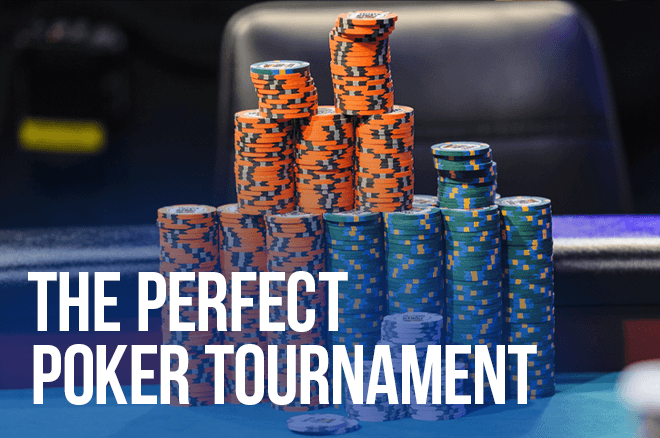
In this Series
- 1 The Perfect Poker Tournament Part 1: How Many Players Should Sit at the Poker Table?
- 2 The Perfect Poker Tournament Part 2: Freeze-Out, Single Reentry, or Unlimited Reentry?
- 3 The Perfect Poker Tournament Part 3: Regular Ante, Button Ante, or Big Blind Ante?
- 4 The Perfect Poker Tournament Part 4: Which Satellite Tournaments Are Best?

